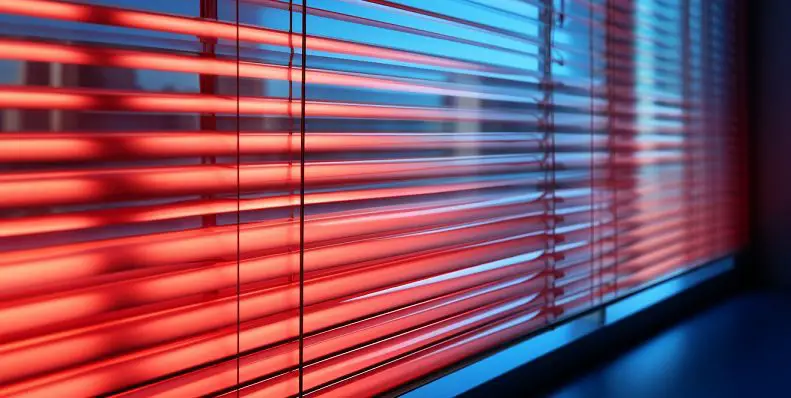Table of Contents
What is the Method Statement for Window Blinds Installation?
The method statement for window blinds installation provides a step-by-step guide to the process and outlines any safety precautions required. The method statement helps ensure the work is carried out efficiently and safely. It serves as a reference for workers to follow standardized procedures.
Overview of Window Blinds Installation
Installing window blinds is a common task required in residential and commercial settings. It involves mounting the window blind hardware and attaching the blind itself in a safe and secure manner. Proper installation ensures the blinds operate smoothly and achieve an aesthetically pleasing look.
Purpose of the Method Statement
The purpose of this method statement is to clearly define the window blind installation process. It will outline the responsibilities of workers, materials and equipment required, safety considerations, step-by-step procedures, and inspection/testing activities. The method statement aims to ensure the blind installation is completed to the specified standard and quality. It seeks to minimize safety risks and prevent any damage to the blinds, window, or surrounding area. The method statement will provide a documented system for current and future blind installation work.
Project Overview
Description of the Installation Project
This project involves the installation of horizontal aluminum blinds in all rooms of the new corporate office located at 123 Main Street. There are a total of 50 windows ranging from 2ft x 3ft to 5ft x 8ft in size that require window blinds.

Scope of Work for Window Blinds Installation
The scope of work includes:
- Taking accurate measurements of all windows requiring blinds
- Marking bracket locations
- Mounting brackets securely into window frames
- Attaching blind slats and connecting control rods/cords
- Testing blind operation and ensuring proper installation
- Cleaning and removing all installation debris
Key milestones include completing measurements, installing all brackets, mounting all blinds, and final inspection/sign off on installation work. The total installation is estimated to take 10 working days.
Health and Safety Considerations
Identification of Potential Hazards
The potential safety hazards present during window blind installations include:
- Falling from heights – risk when working on ladders or steps
- Eye injuries from debris/materials
-Cuts from sharp edges of brackets or blind slats
-Electrocution from cords/control wands near electricity
-Falling objects that can strike workers below
-Strains from lifting/holding heavy window blinds
Safety Measures for Installation
To mitigate risks identified, the following safety measures will be implemented:
- Use harnesses when working from heights above 1.8 meters
- Cordon off unsafe work areas below installation site
- Use tools properly and avoid power tools where possible
- Maintain a clean workspace and remove debris frequently
- Adhere to manual handling procedures when moving window blinds
- Ensure firm footing by avoiding slippery surfaces or obstructions
Personal Protective Equipment (PPE) Requirements
Workers must wear appropriate PPE including:
- Hard hats (when below installation)
- Safety harnesses (for work at heights)
- Cut-resistant gloves
- Eye protection (safety glasses/goggles)
- Covered shoes
Proper use of PPE will be enforced at all times during the window blind installation work.
Tools and Equipment
List of Tools Needed for Installation
The tools required for the window blind installation include:
- Tape measure
- Level
- Screwdrivers
- Power drill
- Step ladder
- Utility knife
- Marking pencil
- Cordless drill
- Masonry drill bits
- Hammer
- Blind brackets
- Fasteners (screws, anchors, etc.)
Description of Each Tool
Tape measure – Used for taking measurements of windows and marking bracket locations
Level – Ensures brackets are mounted straight and even
Screwdrivers – For fastening screws into brackets and blind hardware
Power drill – Drills pilot holes for brackets in wood or masonry
Step ladder – Provides safe access for taking measurements and mounting brackets
Utility knife – Cuts blind slats to size if required
Marking pencil – Marks bracket locations on window frames
Cordless drill – Inserts screws to secure brackets and blind hardware
Masonry drill bits – For pre-drilling bracket holes in concrete/brick walls
Hammer – Used if anchors are needed to affix brackets to walls
Blind brackets – Mounting hardware for attaching window blinds
Fasteners – Screws, anchors used to firmly fix brackets in place
Inspection and Maintenance Procedures for Tools and Equipment
All tools will be inspected for damage or faults prior to use. Power tools will be pat tested as per company policy. Defective equipment will be taken out of service and repaired or replaced. Tools will be properly cleaned and maintained after use. Step ladders will undergo formal inspections every 3 months. Equipment maintenance logs will be updated indicating inspection dates and any issues.
Material Requirements
List of Materials for Window Blinds Installation
The materials required include:
- Aluminum/vinyl horizontal blinds
- Blind slats
- Control rods/cords
- Blind brackets
- Mounting screws
- Masonry anchors
- Measurement tape
- Marking pencil
- Protective sheets
- Access equipment (ladders, scaffolds)
Specifications for Each Material
Aluminum/vinyl blinds – 25mm slat width, durable and corrosion-resistant
Blind slats – Lengths to suit each window, cut to size on site
Control rods – Steel, 1.5mm diameter, zinc coated
Cords – Braided polyester, 1.5mm diameter
Blind brackets – Heavy duty steel, supporting 25kg load
Mounting screws – 5mm diameter, pan head, stainless steel
Masonry anchors – Expanding sleeve type, M8 x 75mm
Measurement tape – 7.5m, accurate to 1mm increments
Marking pencil – Permanent ink, fine tip
Protective sheets – Dust sheets/polyethylene sheets
Access equipment – Industrial grade, inspected and tagged
Quality Control Measures for Materials
All materials will be checked to ensure they meet the required specifications before installation work begins. Blinds and brackets will be verified against the purchase order. Damaged or defective materials will be rejected. Compliance certificates will be obtained from suppliers for access equipment.

Installation Procedures
Pre-Installation Checks
1. Site Inspection
- Use a clean, lint-free cloth to wipe down window surfaces and ensure no dirt or debris is present. Check that surfaces are smooth and ready for bracket mounting.
- Visually inspect frames for any cracks, rot, damage or defects that could impact installation. Report any issues to supervisor.
- Take measurements of width at top, middle and bottom of window, and height on left, center and right sides. Confirm dimensions match the pre-ordered blinds.
- Conduct safety check for risks like falling objects, electrical hazards, slippery surfaces, headroom obstacles etc. Cordon off any unsafe areas.
2. Measurement Verification
- Use steel measurement tape to re-measure width and height at 3 points. Record readings.
- Compare new measurements to originals used for ordering blinds. Calculate differences.
- If variation is more than 3mm, confirm with supervisor if blinds will still fit appropriately or require adjustments like recutting slats.
Step-by-Step Installation
1. Mount Brackets
Hold bracket against frame, level it, and mark hole locations with a permanent marker.
Use power drill with appropriate bit to drill pilot holes if mounting into wood or masonry walls.
Fasten bracket to frame at marked locations using mounting screws. Ensure brackets are spaced evenly based on blind size.
2. Attach Headrail
Align headrail with brackets and tilt to insert front edge into bracket lip.
Push headrail upwards and back until its rear edge snaps into back of bracket. Slide travel lock clip into place if applicable.
Pull down on headrail firmly to ensure it is locked securely in bracket and does not move. Operate tilt mechanism to confirm smooth rotation.
3. Install Slats
Carefully unpack slat bundles and place aside, avoiding damage. Insert slats one by one into headrail channel slots starting from the back using handle.
If slats are too long, measure and mark cut line. Use sharp trimmer shear or utility knife to cut slat. Reinsert cut slat into channel.
4. Testing and Adjustment
Tilt slats open and shut to verify smooth, free movement without jamming. Headrail should rotate easily.
Lower and raise blind fully to check cord/chain retraction function. Adjust spring tension if needed. Ensure bottom bar travels smoothly.
Use vacuum and lint-free cloth to remove any dust or debris from blinds and work area. Confirm completed installation meets standards.
Quality Control and Assurance
Inspection Procedures During Installation
- Visually inspect brackets for secure mounting and proper spacing.
- Check headrail is locked firmly in place with no movement.
- Confirm slats are inserted correctly without gaps or damage.
- Operate blinds to verify smooth functioning.
Verification of Installation Standards
- Installation will be checked against manufacturer specifications.
- Proper bracket positioning and fastening will be confirmed.
- Dimensional accuracy will be verified through measurement.
- Operation of tilting & raising/lowering will be tested.
Addressing and Correcting Deficiencies
- Any loosely fitted brackets will be tightened or refitted.
- Improperly aligned/damaged headrails will be adjusted or replaced.
- Slats that are disproportionate or loose will be reinserted or trimmed.
- Cords/wands not operating smoothly will be adjusted for optimum function.
Deficiencies will be photographed and logged. Installers will be advised on proper corrective actions required. Any significant faults will be reported to the project manager.
Project Completion and Handover
Final Inspection and Acceptance Criteria
A final thorough inspection of all installed blinds will be conducted. Blinds must pass functional testing and visual checks. Any remaining deficiencies or defects must be rectified. The client will inspect and sign-off on the completed work.
Documentation Requirements for Handover
The following documents will be handed over:
- Method statements
- Risk assessments
- Material safety data sheets
- Equipment inspection certificates
- Manufacturer warranty/guarantee cards
- Installation and user manuals
- Certificate of compliance signed by the installer
Client Communication and Satisfaction
The project manager will obtain client feedback to ensure satisfaction. Any comments or issues will be addressed promptly. Clients will be provided instructions on operating and maintaining the blinds.
Conclusion
Recap of Key Points
This method statement establishes the safe installation process, outlining hazards, specifications, step-by-step procedures, quality control, and handover.
Emphasis on Safety and Quality
Strict adherence to the safety guidelines and quality control measures is critical for successful blind installation.
Importance of Following the Method Statement
It is imperative that all workers fully understand and closely follow this method statement for window blinds installation to deliver high quality finished product while avoiding incidents.
tag: # Method Statement for Window Blinds Installation

